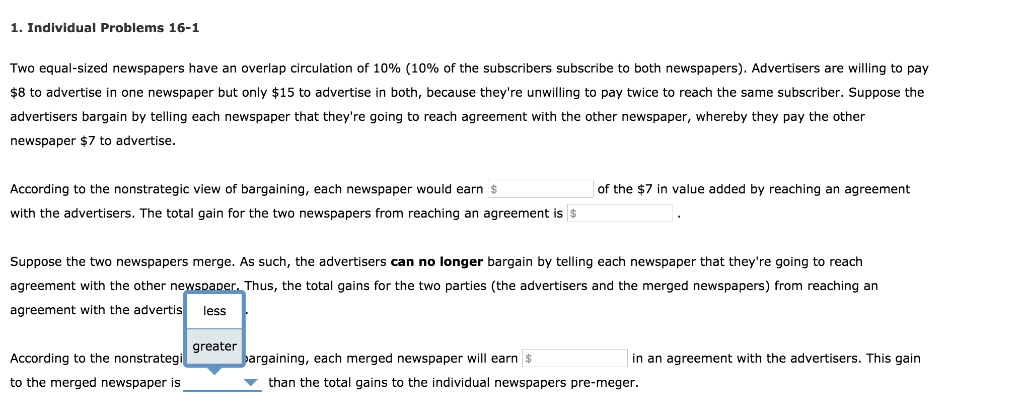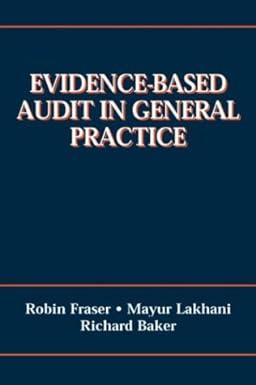Question
Two equal-sized newspapers have an overlap circulation of 10% (10% of the subscribers subscribe to both newspapers). Advertisers are willing to pay $8 to advertise
Two equal-sized newspapers have an overlap circulation of 10% (10% of the subscribers subscribe to both newspapers). Advertisers are willing to pay $8 to advertise in one newspaper but only $15 to advertise in both, because they're unwilling to pay twice to reach the same subscriber. Suppose the advertisers bargain by telling each newspaper that they're going to reach agreement with the other newspaper, whereby they pay the other newspaper $7 to advertise. According to the nonstrategic view of bargaining, each newspaper would earn $ of the $7 in value added by reaching an agreement with the advertisers. The total gain for the two newspapers from reaching an agreement is $ . Suppose the two newspapers merge. As such, the advertisers can no longer bargain by telling each newspaper that they're going to reach agreement with the other newspaper. Thus, the total gains for the two parties (the advertisers and the merged newspapers) from reaching an agreement with the advertisers are $7. According to the nonstrategic view of bargaining, each merged newspaper will earn $ in an agreement with the advertisers. This gain to the merged newspaper is  than the total gains to the individual newspapers pre-meger.
than the total gains to the individual newspapers pre-meger.
Step by Step Solution
There are 3 Steps involved in it
Step: 1

Get Instant Access to Expert-Tailored Solutions
See step-by-step solutions with expert insights and AI powered tools for academic success
Step: 2

Step: 3

Ace Your Homework with AI
Get the answers you need in no time with our AI-driven, step-by-step assistance
Get Started


